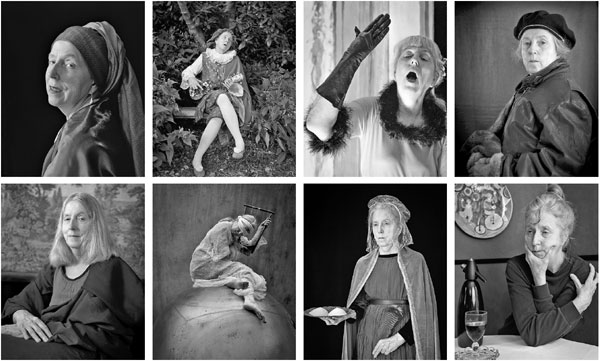Message in a bottle: Beauty lasts forever
Updated: 2016-02-22 14:03
By Ren Jie(China Daily USA)
|
||||||||
New renditions of 12 old masters - photographically remastered - have fascinated Chinese microblog users, Ren Jie reports
The allegorical bottle that Laura Hofstadter threw into the water has had an interesting journey, one that would have taken it up San Francisco Bay, under the Golden Gate Bridge, out into the Pacific Ocean and finally washing up ashore somewhere in China all these years later.
And unbeknownst to her until recently, the messages in that bottle have been making waves in the country where it landed, picked up on Sina Weibo, the country's microblogging network over the past few months.
|
In the series, titled stages, in black and white, Hofstadter has photographed herself in the style of the works of Botticelli, Da Vinci, Magritte, Rembrandt and other masters. Photos Provided to China Daily |
The messages are photographs that Hofstadter, 65, of Menlo Park, California, has been taking for 35 years, and about 6,000 users of Sina Weibo have been so captivated by 12 of these pictures in particular that they have passed them on to others, yet another example of the power of the Internet - particularly given that Hofstadter has never set foot in China.
So what is it about these 12 images and about Hofstadter that has so enchanted Chinese eyes? In the series, titled Stages, in black and white, Hofstadter has photographed herself in the style of the works of Botticelli, Da Vinci, Magritte, Rembrandt and other masters.
"In our society as women get older - to my age and beyond - they become invisible, so I liked the idea of forcing people to look at a 65-year-old woman by inserting myself into a classic image," Hofstadter says.
"I have tried to express my feelings as a woman growing older in a youth-obsessed society. The portfolio is also a loose narrative reflecting my experience of facing breast cancer, whose treatment disfigured my body. My hope is that viewers will confront preconceptions about youth, age, beauty, and body image when looking at these pictures."
This hope seems to be on the way to realization in China, one Weibo user noting in appreciation of Stages: "People cannot always be young, but they can always be beautiful." Another guessed that Hofstadter "must be an Aquarian".
Hofstadter says the first pictures in the series were a few self-portraits made in front of a simple black backdrop at home. She pressed on, encouraged by her photography teacher and classmates, "particularly the younger women". As she set up and shot the photos, her husband, Leonard Shar, provided feedback and was an invaluable collaborator, she says.
"When I developed the film and looked at the images, they reminded me of some classical paintings I knew from years of looking at art. I played around a little bit with this idea and started to get intrigued - and then slightly obsessed - with how I could evoke a classical painting using simple props and sets at home."
Eventually, she says, "I realized that I was experiencing a certain kind of liberation as I placed myself into a painting whose original subject was someone entirely different from me, whether it was a young or middle-aged woman, a young boy, or an old man."
Hofstadter grew up on the campus of Stanford University near Palo Alto, her father being a physics professor, and it was there, she says, in the basement of the university's art gallery, that she "discovered the world of the photographic darkroom" in 1970.
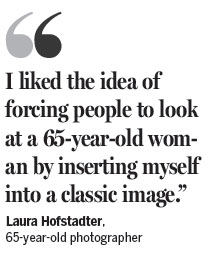
Her memories of growing up on campus are rich and colorful, she says, and she eventually graduated with a biology degree there before becoming a science writer.
About 10 years ago, after returning to photography following decades of break from it, Hofstadter says, "digital cameras had taken over so I needed to start all over again."
In the pre-digital age, she loved working in the darkroom, "swishing the chemicals in the tray, watching the image arise on the blank piece of gelatin silver paper".
"And I still do. ... Black and white photography is what I started with, and I still like its simplicity because it allows me to focus on content. Color is so beautiful and compelling that I find it upstages everything else."
Stages is a combination of two worlds, the old and the new, she says.
"And I wanted to have a variety of subjects, so that in my photographs I would take the place of a young woman, a young man, a middle-aged woman, or even an older man."
One key to the series is simplicity. All the photos were shot in her house and backyard. She chose simple props, and says she sometimes had to create special items not found around the house. She dressed in garments from her own wardrobe, borrowed a hat from her niece and rented a piece of clothing from a local costume bank, and had some help from a tailor.
"A lot of the work in creating these pictures was theatrical in nature, reminiscent of staging a play."
The playful creativity of the pictures is one thing that seems to have appealed to many Chinese viewers.
"There seems to be a humorous side to them," one Weibo commenter says. "They look like wonderful pieces of cosplay," another says.
However, Hofstadter says that as she understands it cosplay is about impersonating a character and role-playing in public, and doing so by meticulously recreating a character with a high degree of accuracy, and that is not what the pictures are about.
"I am interested in the dissonance that arises by inserting myself into a classic image. Instead of slavishly re-creating each source artwork, I prefer to sacrifice features of the original while adding new touches to make an image that is both recognizably the painting and also purely me."
Nevertheless, she says, "the images are also conceived with a certain degree of humor and playfulness".
Hofstadter says that though she has not been to China, she admires its art.
"I love the beautiful landscape paintings depicting China's mountains, lakes and rivers, as well as the wonderful and whimsical images of beasts, birds, branches and flowers."
She likes the Chinese ancient panting Walking on a mountain path in Spring by the Song Dynasty (960-1279) artist Ma Yuan. She also appreciates contemporary Chinese photography works by Adou, Wang Qingsong, Wang Wusheng and Fan Ho.
Contact the writer at renjie@chinadaily.com.cn
(China Daily USA 02/22/2016 page9)
- Missing children found safe in nearby village
- Rich Chinese splurge on sportswear as luxury's lustre dims
- Urgent remedy sought for pediatrician shortage
- China starts safety check for school buses as new semester draws near
- Ticket scalpers face crackdown at Beijing hospitals
- Judicial DNA test in hot demand after policy change
- Classic Car Show kicks off in London
- Balkan, Austria police agree to register refugees on Macedonian border
- Turkey blames Kurdish militants for Ankara bomb; vows reprisals
- Britain scrambles fighters to intercept Russian bombers
- Chinese community to protest against Peter Liang's verdict
- Car bomb attack on military in Turkish capital kills 28

 The world in photos: Feb 15 - 21
The world in photos: Feb 15 - 21
 Lantern Festival in the Chinese paintings
Lantern Festival in the Chinese paintings
 Meet Melanie, the real-life mermaid
Meet Melanie, the real-life mermaid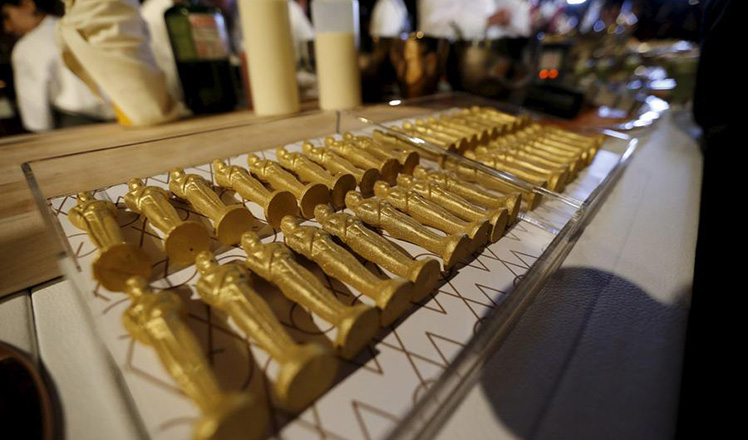
 88th Academy Awards Governors Ball Press Preview
88th Academy Awards Governors Ball Press Preview
 Chinese photographers' work shines in major photo contest
Chinese photographers' work shines in major photo contest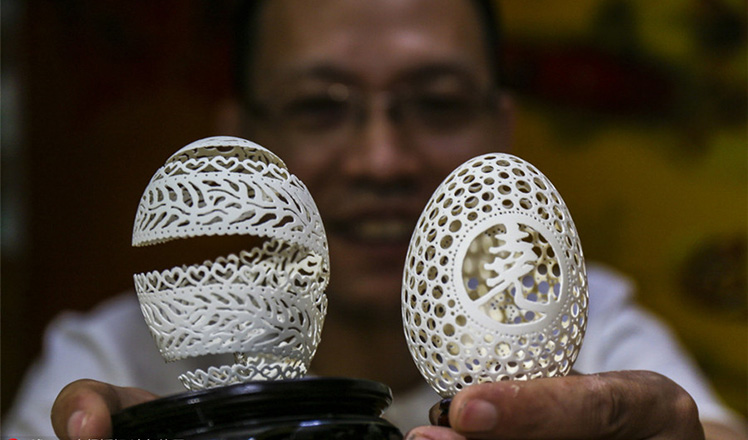
 Egg carving master challenges Guinness World Record
Egg carving master challenges Guinness World Record
 Missing children found safe in nearby village
Missing children found safe in nearby village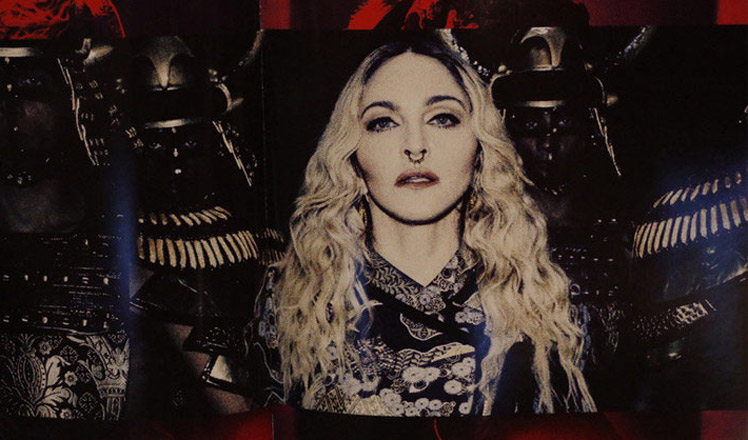
 Madonna's world tour lands in Hong Kong
Madonna's world tour lands in Hong Kong
Most Viewed
Editor's Picks

|

|

|

|

|

|
Today's Top News
What ends Jeb Bush's White House hopes
Investigation for Nicolas's campaign
Will US-ASEAN meeting be good for region?
Accentuate the positive in Sino-US relations
Dangerous games on peninsula will have no winner
National Art Museum showing 400 puppets in new exhibition
Finest Chinese porcelains expected to fetch over $28 million
Monkey portraits by Chinese ink painting masters
US Weekly

|

|
